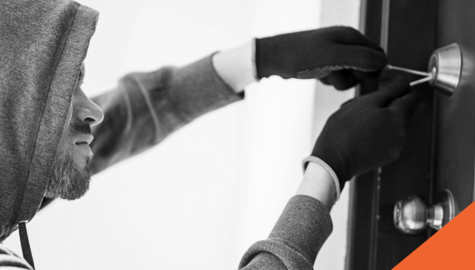Does Car Insurance Cover Hail Damage & How to File a Claim
Thursday, 16 May 2024
From the prairies to the coastal provinces, Canada's diverse climate makes every region susceptible to hailstorms. While this weather phenomenon may not be as common as rain or snow, it still presents a reasonable level of concern for motorists and their vehicles.
Due to the physical makeup and rate at which these frozen projectiles fall, cars can experience damage ranging from small, unsightly blemishes to more severe issues that compromise the vehicle's structural integrity.
With that in mind, you might wonder, “Does car insurance cover hail damage?”. This blog will provide clarity on that concern as well as many other queries you might have about hail damage, car insurance, and filing a claim with your provider.
Does Car Insurance Cover Hail Damage?
There are various types of car insurance available, each containing unique forms of coverage and protection for you and your vehicle. This section will discuss some of the most common types of insurance and whether their inclusions cover hail damage to your car.
Liability Coverage:
All drivers in Canada are required by law to possess an insurance policy that has the minimum amount of liability coverage. The exact minimum amount varies by province, but in most cases, it is set at $200,000. Liability coverage will protect you from financial burden in situations where your actions as a driver resulted in damage to someone’s property or caused them physical harm. It will help pay for things like repair and replacement costs, medical bills, and legal fees. Unfortunately, this will not cover damage from hail.
Collision Coverage:
As its name suggests, this form of insurance will cover damages to your vehicle resulting from a collision with another vehicle or object. Collision coverage is designed to help repair or replace your car if it is damaged in a collision where you are at fault. Collision insurance is optional in most provinces but is required in Manitoba and Saskatchewan. While this form of coverage can certainly be of use to you following an accident, it will not help with hail damage.
Comprehensive Coverage:
This form of insurance becomes useful during unexpected situations that cause damage to your car. This can include theft and vandalism, fires and floods, animals or falling objects, and damage from storms - including hail. As an alternative, you could also carry a policy that has coverage for All Perils or Specific Perils added to it. You would just need to make sure hail is listed as one of the perils you are covered for.
Hailstorms can cause significant damage to a vehicle, leading to a range of issues that may require repairs or replacement. If you encounter hail damage, car insurance can be a lifesaver. We’ve included some details below about what could be covered by your comprehensive auto insurance policy if you find yourself in this situation.
How does car insurance cover hail damage to a vehicle’s exterior?
Dents and Dings: Hail can create numerous dents and dings on the exterior surfaces of the vehicle, affecting the hood, roof, trunk, and even the sides. The severity of these dents depends on the size and force of the hailstones.
Cracked or Shattered Glass: Larger hailstones can crack or shatter the windshield and windows. This compromises the visibility and structural integrity of the glass and presents a major safety concern for drivers.
Scratches and Paint Damage: Hail may also cause scratches on your vehicle's paint, exposing the underlying metal. In severe cases, the paint may chip or peel, leading to an increased possibility of rust accumulating on your car.
Damaged Exterior Accessories: Hail can also damage external accessories such as side mirrors, antennas, or other protruding features on the vehicle.
Does car insurance cover hail damage to the interior components of a car?
Car insurance typically covers hail damage to the exterior of cars and may not provide coverage for damage to the interior.
If water leaks into the interior of the car due to hail damage (for example, through a broken window), resulting in damage to the upholstery, electronics, or other interior components, the repairs to the interior may not be covered by standard comprehensive insurance. However, some policies or insurance providers may offer additional coverage options or endorsements that extend protection to certain interior elements.
Since every insurance provider is different, it is important to review your policy to confirm what is included in your coverage. You can also contact your BIG broker to discuss these details.
How to File a Hail Damage Claim
Discovering hail damage on your car can be disheartening, but filing a hail damage insurance claim doesn't have to be a daunting task. In this section, we'll walk you through the step-by-step process of filing a hail damage claim.
Take Photos of the Damage
The first crucial step in the hail damage claim process is documenting the extent of the damage.
Take your time to assess the condition of your vehicle. Look for any physical damage to the overall structure. Take photos of any dings, dents, scratches, or cracks that were not present before the storm. Make sure you have good lighting to depict each issue effectively.
Provide close-up shots and ensure your photos have sufficient lighting. If done correctly, these images will serve as essential evidence for your claim and provide a visual record of the damage you incurred.
Contact Your Insurance Company
Once you have gathered evidence of the hail damage, you should then get in touch with your insurance company. Initiate the claims process by contacting your insurer's claims department or filing a claim online. Provide them with a detailed account of the incident and share the photos you took.
Be prepared to answer questions about the date, time, and location of the hailstorm and any other relevant details. Timeliness is key, so reporting the damage immediately will expedite the assessment and repair process.
Wait for an Estimate
After filing your claim, your insurance adjuster will assess the extent of the hail damage and provide you with an estimate for repairs. This process may involve an in-person inspection or a virtual assessment based on the evidence you submitted. Once the evaluation is complete, the adjuster will provide a detailed estimate outlining the costs of repairing or replacing the damaged components.
Take Your Car to an Auto Body Shop
With the estimate in hand, it's time to choose an auto body shop for the repairs. While some insurance companies have preferred repair shops, you may also have the flexibility to select one that meets your preferences. Present the estimate to the chosen shop, and they will begin the process of restoring your vehicle to its previous condition. Maintain regular communication
with both your insurer and the repair shop for updates on the progress.
Hail Damage FAQs
How is hail damage assessed on a car?
Assessing hail damage involves a thorough examination of the vehicle. Adjusters evaluate the size and quantity of dents, the extent of paint damage, and any other visible effects. Photos and in-person inspections aid in determining the necessary repairs and associated costs.
What is the average insurance payout for hail damage on a car?
Insurance payouts for hail damage vary based on factors such as the severity of the damage, the insurance policy's coverage limits, and the deductible. On average, payouts can range from a few hundred to several thousand dollars.
How much hail damage can total a car?
Whether hail damage results in a total loss depends on the car's overall value and the cost of repairs. If the repair costs exceed a certain percentage of the vehicle's value, the insurance company may declare it a total loss.
Will hail damage cause my insurance rates to go up?
Hail damage claims are typically considered acts of nature, and filing a claim for them is less likely to lead to an increase in insurance rates. If you file a claim, it will go on your record. If you have a history of filing multiple claims, this can result in higher premiums. However, checking with your specific insurance provider is essential, as policies can vary.
Insurance Made Easy with BIG
Hail can have extensive ramifications, from minor dents and dings to more severe issues like cracked windshields. Navigating the aftermath of a hailstorm can be stressful, so it is crucial for every vehicle owner to understand how car insurance can mitigate the financial impact. As highlighted in this blog, comprehensive insurance stands as the ultimate safeguard, offering coverage for a variety of perils.
By staying informed about your insurance policy, promptly assessing and documenting hail damage, and initiating the claims process efficiently, you can ensure that this unfortunate situation can be resolved as efficiently as possible. With the right insurance coverage, you can weather the storm and drive forward with confidence, knowing that your vehicle is protected against the unpredictable forces of nature.
If you need a new auto insurance policy, request a quote from BIG today, and one of our experienced brokers will be in touch to provide you with the advice and coverage you need.



